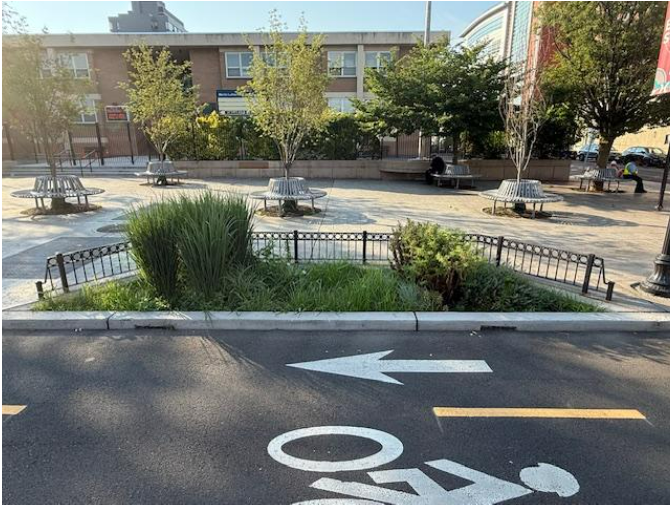Rain Gardens: Where Beauty Meets Sustainability
/By Erin Brown
Imagine this: You’re driving down Bergen Ave, going to your favorite coffee shop, and along the side of the road, you notice near the curb an area of plants and flowers blowing in the wind. These small gardens along the road, while they are beautiful, serve a bigger purpose. They’re not your average garden; these are rain gardens and are an impactful way to integrate green infrastructure into the local community. But what are rain gardens?
A rain garden, as the Groundwater Foundation defines as “ a garden of native shrubs, perennials, and flowers planted in a small depression, which is generally formed on a natural slope. It is designed to temporarily hold and soak in rainwater runoff that flows from roofs, driveways, patios, or lawns. Rain gardens are effective in removing up to 90% of nutrients and chemicals and up to 80% of sediments from the rainwater runoff. Compared to a conventional lawn, rain gardens allow for 30% more water to soak into the ground.”
Rainwater runoff can be a problem, especially if you’re living in a city prone to flooding, like Jersey City. Every time it rains, water runs off impermeable surfaces, such as roofs or driveways, collecting pollutants like dirt, fertilizer, chemicals, oil, garbage, and bacteria along the way. The pollutant-laden water enters storm drains untreated and flows directly to nearby streams and ponds. The US EPA estimates that pollutants carried by rainwater runoff account for 70% of all water pollution.
The rain garden process acts as a filter, like a water filter you have at home. It collects the rain water runoff, allowing it to be filtered by vegetation and trickle into the soil, recharging ground water aquifers and improving water quality by filtering out the pollutants. To learn more about how a rain garden works, watch this video.
In addition to helping with water quality, rain gardens have a additional benefits, such as:
Beautifying neighborhoods
Preserving native vegetation
Providing localized stormwater and flood control
Attracting beneficial birds, butterflies, and insects
Ease of maintenance after establishment
To really get the most out of a rain garden it is important for us collectively to do our part to maintain and protect it. As an everyday person what we can do is not throw trash or litter into the rain garden and refrain from having pets relieve themselves in the rain garden. The acid from pet urine can be harmful to plants, especially if new plants are trying to grow.
Rain Gardens are a simple and effective way of integrating green infrastructure and are a tool to make Jersey City more resilient against the effects of climate change, heavy rainfall being one of them. To make our city more climate resilient, we need a city-wide rain garden campaign. Here at SJC, based on Jersey City being a medium-sized city, our goal is to install 11,000 rain gardens throughout the city.
Learn more about Jersey City’s Green Infrastructure and SJC Rain Garden + Art Campaign, and show your nearest rain garden some love the next time you’re around one!
Erin Brown is a board member with Sustainable JC and Print Production Project Manager at an advertising agency in NYC.






